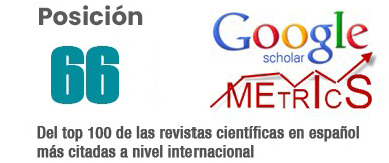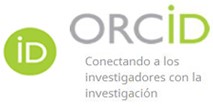Design of a process management system
DOI:
https://doi.org/10.62452/rmgsp889Keywords:
Management, organizations, processesAbstract
This publication is the result of research on process management systems applied to business organizations to improve disorganization in their operations and that are basically linked to the duplication of activities, or lack of management to contact a customer for sale. or renewal of products or services, which directly influences the income of the organization and therefore affects the profitability of the business, its productivity and competitiveness. With an exploratory and descriptive approach, part of the available bibliographic population on management systems by process was reviewed, from which the most relevant aspects were taken according to the authors of the research project, together with the professional experience in managing these management systems. by processes, and it was possible to propose an own design of a management system model by processes. In the repeated application of the same, it will be validated.
Downloads
References
Armstrong, G., & Kotler, P. (2013). Fudamentos de marketing. Pearson.
Bonilla, E., Díaz, B., Kleeberg, F., & Noriega, M. T. (2020). Mejora continua de los procesos, herramientas y técnicas. Fondo Editorial.
David, F. (2013). Conceptos de administración estratégica. Pearson.
Ecuador. Secretaría Nacional de Administración Pública. (2016). Norma Técnica de Prestación de
Servicios y Administración por Proceso. Registro Oficial. https://www.gobiernoelectronico.gob.ec/wp-content/uploads/2018/10/Norma-T%C3%A9cnica-de-Prestaci%C3%B3n-de-Servicios-y-Administraci%C3%B3n-por-Procesos.pdf
Gallardo Hernández, J. (2012). Administración estratégica de la visión a la ejecución. Alfaomega.
Griffin, R. (2011). Administración. Cengage Learning.
Gutiérrez Pulido, H., & De la Vara Salazar, R. (2009). Control estadístico de calidad y seis sigma. Mc Graw Hill.
Krajewski, L., Ritzman, L., & Malhotra, M. (2008). Administración de operaciones. Pearson.
Louffat, E. (2017). Diseño organizacional basado en procesos. Cengace Learning.
Mallar, M. Á. (j). La gestión por procesos: un enfoque de gestión eficiente. Revista Científica Visión de Futuro, 13(1).
Medina León, A., Nogueira Rivera, D., & Hernández Nariño, A. (2009). Relevancia de la gestión por procesos en la planificación estratégica y la mejor continua. Eidos, 2.
Ordóñez Arias, Y. A., Suárez Huertas, R., & Velásquez Galeano, T. (2016). Manual de procesos y procedimientos. (Tesis de grado). Universidad Distrital Francisco José de Caldas.
Ortiz Cantú, S., & Pedroza Zapata, Á. (enero de 2006). ¿Qué es la gestión de la innovación y la tecnología? Journal of Technology Management & Innovation, 1(2), 64-82
Pardo Álvarez , J. M. (2017). Gestión por procesos y riesgo operacional. Aenor.
Pardo Álvarez, J. M. (2012). Configuración y usos de un mapa de procesos. Aenor.
Peña Gómez, J. C., & Rivera Martínez, F. (2016). Administración de procesos. Guía para el aprendizaje. Pearson.
Pérez Fernández de Velasco, J. (2004). Gestión por procesos. Esic.
Robbins, S., Coulter, M., Martocchio, J., & Long, L. (2018). Administración. Pearson.
Stanton, W., Etzel, M., & Walker , B. (2007). Fundamentos de Marketing. McGrawHill.
Tovar, A., & Mota, A. (2007). CPIMC: Un modelo de Administración por procesos. Panorama Editoral.
Velásquez Contreras , A. (enero de 2005). Análisis situacional, intervención y aprendizaje organizacional. Revista Escuela de Administración de Negocios, 53, 52-71.
Downloads
Published
Issue
Section
License
Copyright (c) 2022 Pedro Manuel Cabeza García, Francisco Javier Monroy Espinosa, Pablo Hernán Solórzano Polo (Autor/a)

This work is licensed under a Creative Commons Attribution-NonCommercial-ShareAlike 4.0 International License.
Authors who publish in Revista Metropolitana de Ciencias Aplicadas (REMCA), agree to the following terms:
1. Copyright
Authors retain unrestricted copyright to their work. Authors grant the journal the right of first publication. To this end, they assign the journal non-exclusive exploitation rights (reproduction, distribution, public communication, and transformation). Authors may enter into additional agreements for the non-exclusive distribution of the version of the work published in the journal, provided that acknowledgment of its initial publication in this journal is given.
© The authors.
2. License
The articles are published in the journal under the Creative Commons Attribution-NonCommercial-ShareAlike 4.0 International License (CC BY-NC-SA 4.0). The terms can be found at: https://creativecommons.org/licenses/by-nc-sa/4.0/deed.en
This license allows:
- Sharing: Copying and redistributing the material in any medium or format.
- Adapting: Remixing, transforming, and building upon the material.
Under the following terms:
- Attribution: You must give appropriate credit, provide a link to the license, and indicate if any changes were made. You may do this in any reasonable manner, but not in any way that suggests the licensor endorses or sponsors your use.
- NonCommercial: You may not use the material for commercial purposes.
- ShareAlike: If you remix, transform, or build upon the material, you must distribute your creation under the same license as the original work.
There are no additional restrictions. You may not apply legal terms or technological measures that legally restrict others from doing anything the license permits.




